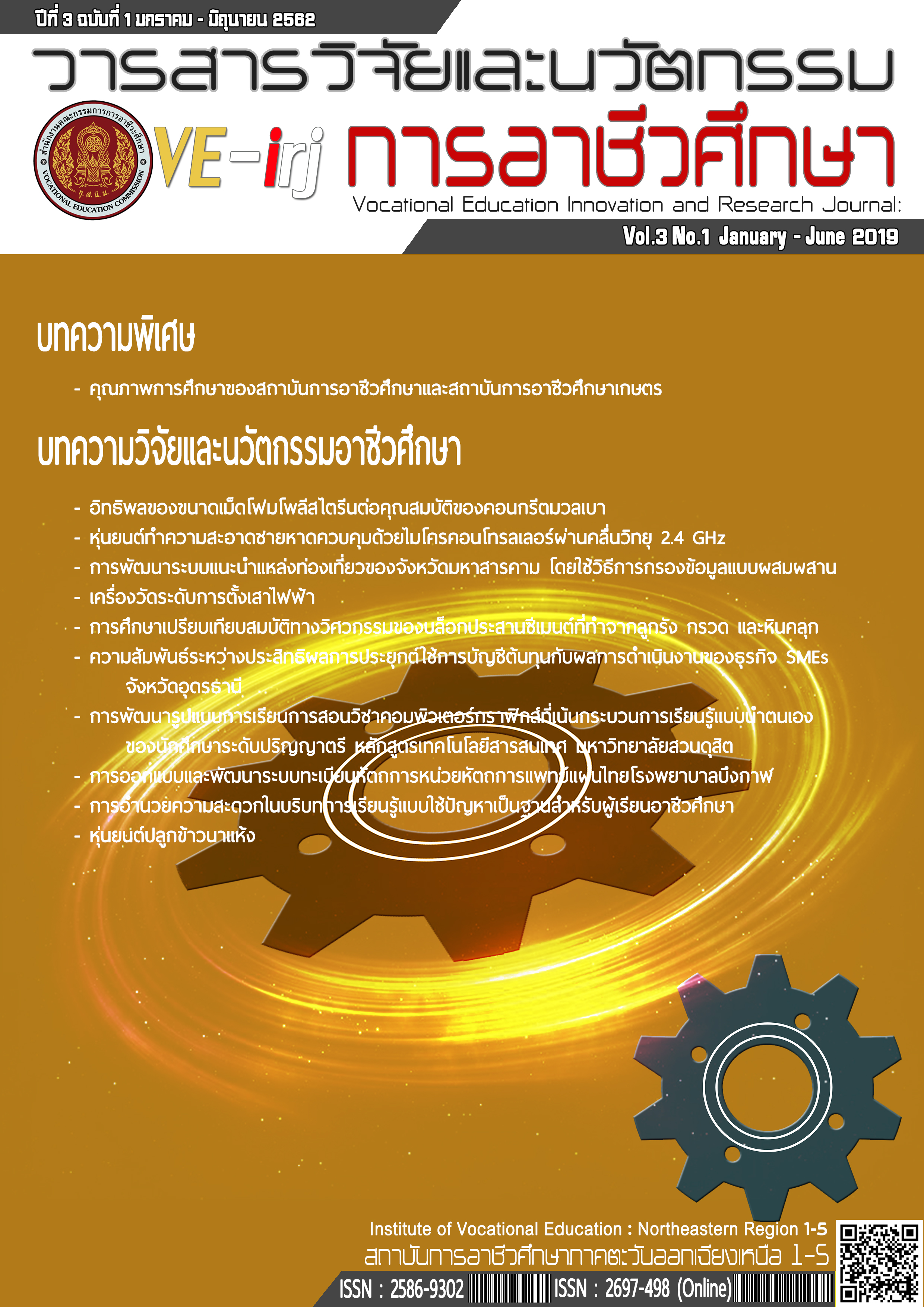Influence of EPS Aggregate Sizes on Properties of Lightweight Concrete
Main Article Content
Abstract
This research aims to study the influences of volume fraction and particle size of expanded polystyrene (EPS) foam beads on properties of lightweight concrete. Three concrete mixtures with different volume fractions of cement-sand-EPS foam bead (C-S-F) of 1-1-1, 1-1-1.5, and 1-1-2 were produced. For each concrete mixture, three EPS foam beads with diameters of 2.0 mm, 4.75 mm, and 9.5 mm, were used in order to study the effect of its particle size. Water to cement ratio (w/c) was kept constant at 0.40 (by weight of cement). Test results revealed that addition of small size EPS foam bead (2.0 mm) diminished compressive strength of the concrete, as compared to larger EPS particle sizes. While compressive strength and density of the concrete reduced proportionally as the volume fraction of EPS foam increases, the use of different EPS foam sizes caused only marginal difference in concrete density. It was also found that the concrete mixed with EPS foam exhibited remarkably higher water absorption than that of the control mixture.
Article Details
สงวนสิทธิ์ โดย สถาบันการอาชีวศึกษาภาคตะวันออกเฉียงเหนือ 1
306 หมู่ 5 ถนนมิตรภาพ หนองคาย-อุดรธานี ตำบลโพธิ์ชัย อำเภอเมืองหนองคาย จังหวัดหนองคาย 43000
โทร 0-4241-1445,0-4241-1447
ISSN : 3027-6861 (print) ISSN : 3027-687X (online)
References
[2] N. Narayanan and K. Ramamurthy. “Structure and properties of aerated concrete: a review”. Cement Concrete and Composites, 22, pp. 321-329, 2000.
[3] Tiong-hua Wee, Daneti Saradhi Babu, T. Tamilselvan, and Hwee-sin Lim. “Air-void system of foamed concrete and its effect on mechanical properties”. ACI Mater J, 106, pp. 45-52, 2006.
[4] M.R. Jones and A. McCarthy. “Preliminary views on the potential of foamed concrete as a structure material”. Mag Concr Res, 57, pp. 21-31, 2005.
[5] D.S. Babu, K.G. Babu, and T.H. Wee. “Effect of polystyrene aggregate size on the strength and moisture migration characteristics of lightweight concrete”. Cem Concr Compos, 28, pp. 520-527, 2006.
[6] K. Ganesh Babu and D. Saradhi Babu. “Behaviour of lightweight expanded polystyrene concrete containing silica fume”. Cem Concr Res, 33, pp. 755-762, 2003.
[7] D. Saradhi Babu, K. Ganesh Babu, and T.H. Wee. “Properties of lightweight expanded polystyrene aggregate concretes containing fly ash”. Cem Concr Res, 35, pp. 1218-1223, 2005.
[8] R. Sri Ravindrarajah and A.J. Tuck. “Properties of hardened concrete containing treated expanded polystyrene beads”. Cem Concr Compos, 16, pp. 273-277, 1994.
[9] Ning Liu and Bing Chen. “Experimental study of the influence of EPS particle size on the mechanical properties of EPS lightweight concrete”. Con Build Mat, 68, pp. 227-232, 2014.
[10] Thai Industrial Standard Institute, “TIS 15: 2555 Thai standard for Portland cement: Part I specification”, TISI: Bangkok, 2012.
[11] British Standard Institute, “BS EN 12390-3: Testing hardened concrete. Compressive strength of test specimens", BSI: UK, 2009.
[12] British Standard Institute, “BS 1881-122: Testing concrete. Method for determination of water absorption”, BSI: UK, 2011.
[13] Thai Industrial Standard Institute, “TIS 38: 2533 Standard for hollow non-load bearing concrete masonry units”, TISI: Bangkok, 1990.

